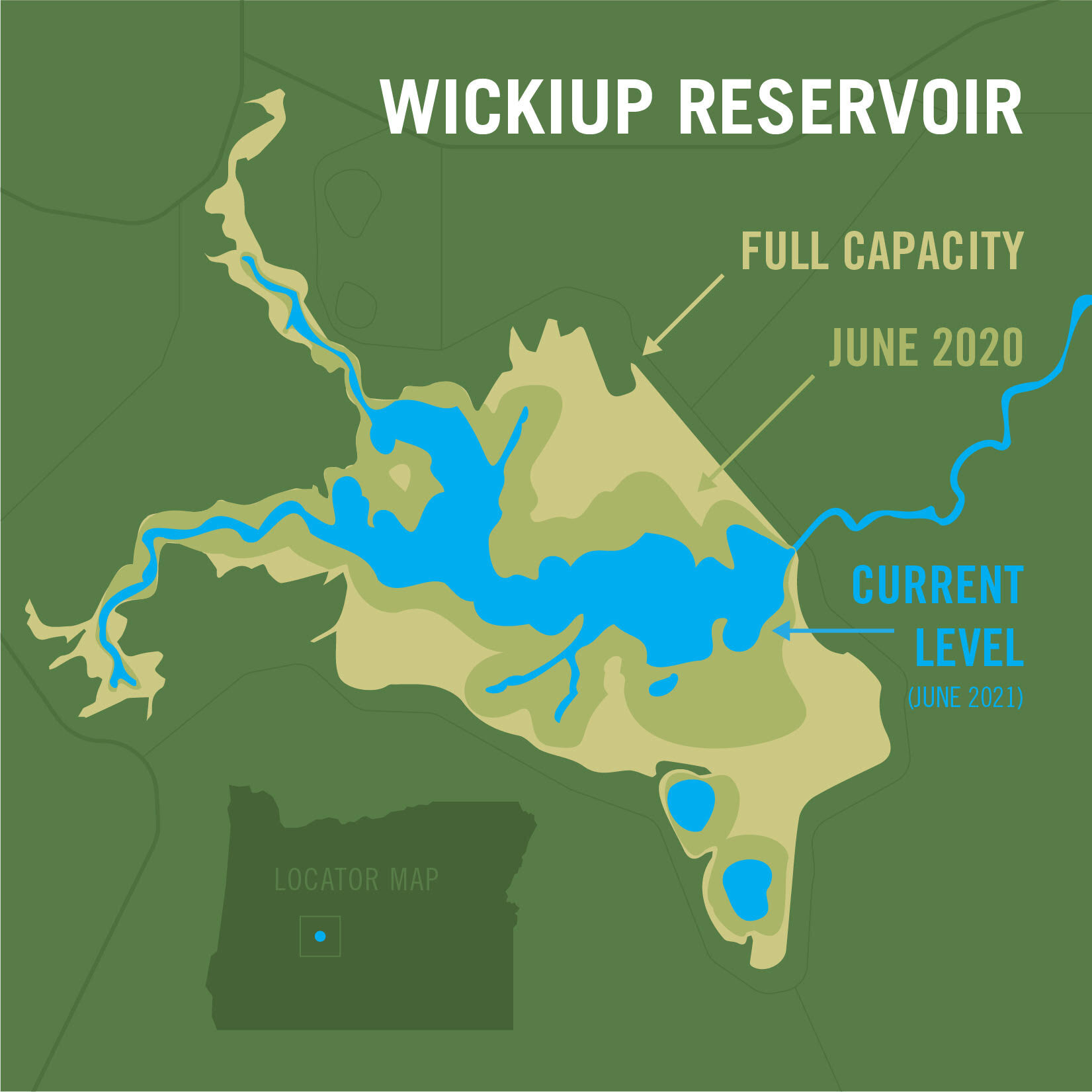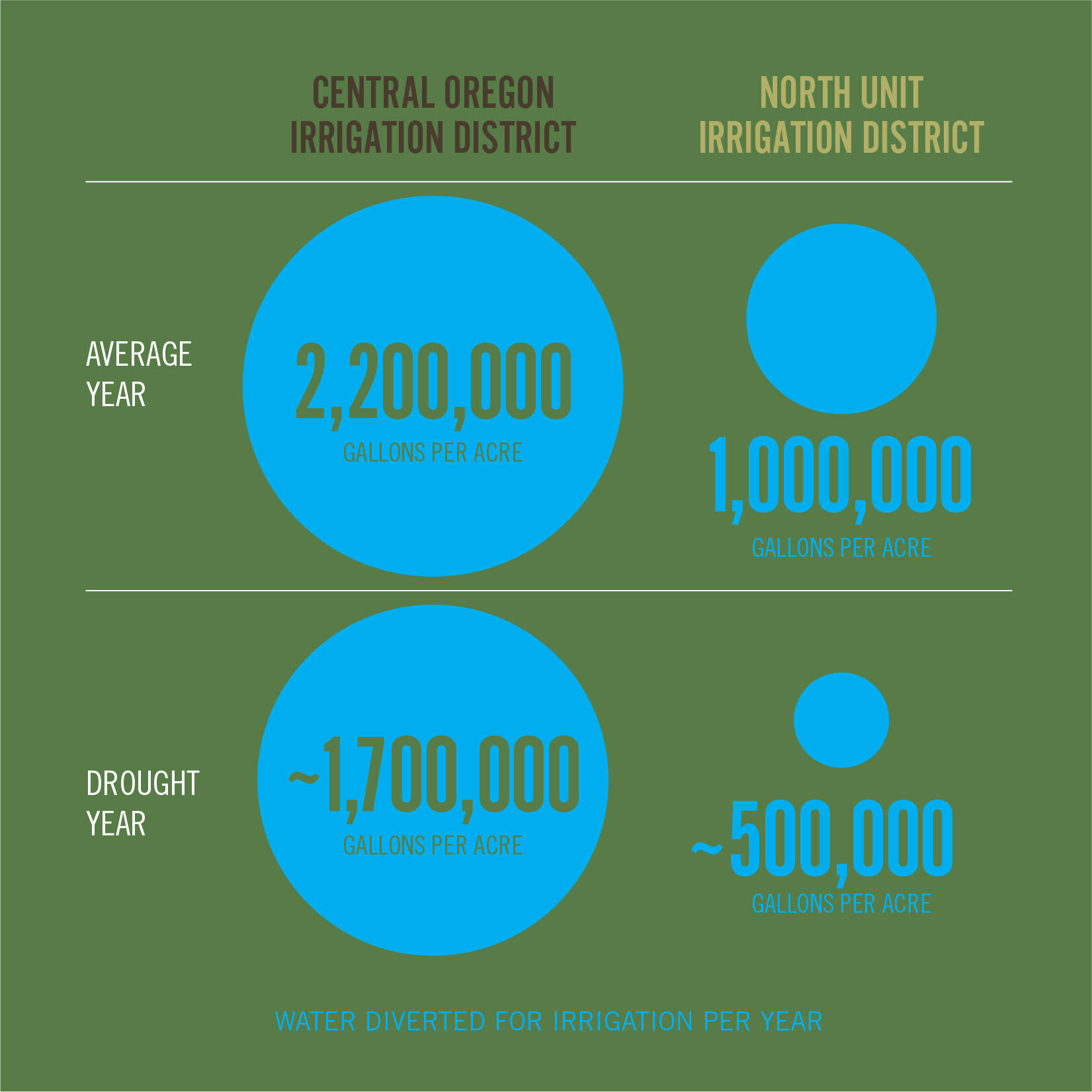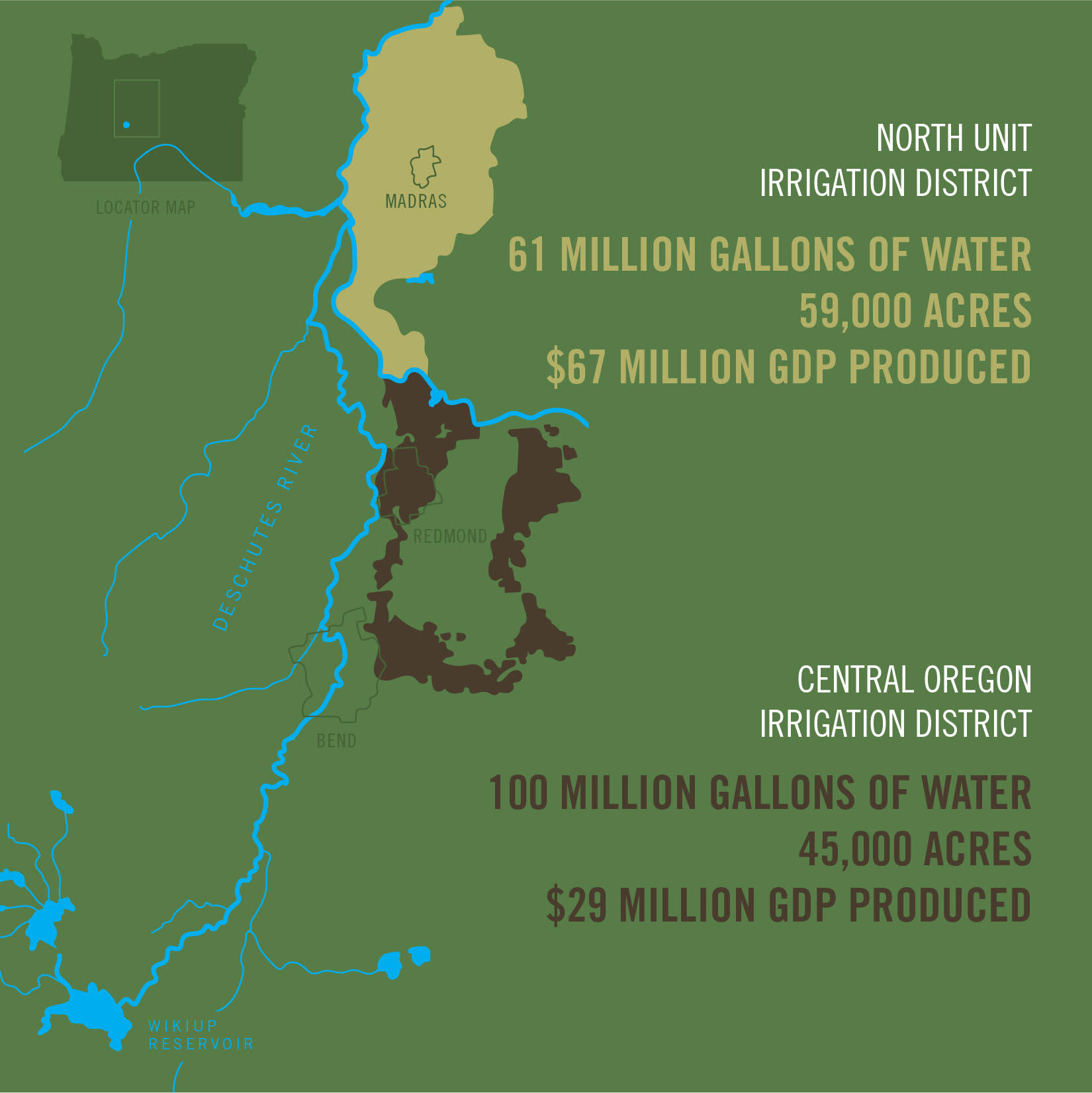Restoring rivers and springs
“It is time to move forward with an aggressive plan to eliminate waste and to protect water for higher and better uses. Fortunately, an array of solutions has been studied and tested in the Deschutes Basin over the past twenty years. Considering climate change and the prolonged drought being experienced here, time is of the essence.”
Photo by Arian Stevens
Drought has been the big story resonating throughout Central Oregon this year. The record-breaking heat and dry conditions were devastating for farming families in Jefferson County, many of whom now face a shaky financial future. At LandWatch, we know these farmers desperately need water for their livelihoods, and we mourn fish and wildlife ravaged by the drought.
With the mindset of scarcity, it is easy to pit fish and wildlife against farmers, as though they are fighting for the same water to survive. At LandWatch, we know the true issue is not the scarcity of water; it is the mismanagement of water that creates an inequitable system that leaves both the river and producing farmers running dry.
Photo by Caitlyn Burford
The reality is that the past hundred years of water management in the Deschutes River Basin has caused serious harm to the plants and animals along the Deschutes River. Too much water is held back behind Wickiup Reservoir in the winter and the shallow banks dry out. In the early summer months, the Deschutes is again inundated with water, artificially flooding the landscape and causing rapid erosion. The Oregon spotted frog, once ubiquitous throughout the wetlands along the river, is now is threatened with extinction. Although they are gone today, bull trout once thrived in prodigious numbers in the clear, cold waters of the Upper Deschutes River. Redband Trout have plummeted in the last fifty years as native sedges and grasses have been stripped away from the riverbanks, due to human-caused erosion. Part of our work at LandWatch this year has been to sound the alarm and raise awareness about the immediate need to restore this beloved river system.
We know there is one main place to look for answers. We need to eliminate wasteful water management and irrigation practices in Central Oregon.
Oregon water law states that the privilege of having a water right is contingent upon one’s ability to put the water to beneficial use without waste. Unfortunately, across Central Oregon, water waste runs rampant. While the law is on our side, the state has shown reluctance to regulate and enforce this basic principle. To protect water rights (and their revenue) from forfeiture, irrigation districts have devoted a good deal of effort to make sure water is used within their district boundaries at all costs. There are stories across Deschutes County of landowners being compelled to dump water in places they had no intention of irrigating. Surely, when Oregon water law was passed in 1909, the founders did not intend that this water waste should be considered a legitimate beneficial use of this precious resource.
Despite drought conditions, senior districts receive virtually all of their allocated water every year, deterring irrigation districts from conserving water or investing in efficiency gains. Waste occurs along every point of transmission. Beginning at the river, water is diverted into leaky canals comprised of fractured basalt rock that lose as much as 50% in transmission. Then, the water flows to district headgates where it is delivered to landowners through private laterals that are equally porous. Once in the private lateral, landowners (usually with small acreages) get their water from the ditch on a twenty-four-hour schedule, meaning that some landowners receive their water in the middle of the night. If a landowner fails to divert his or her water, it may get picked up by someone else or spill out the end of a canal. Once diverted, 25% of the landowners will deploy flood irrigation, the least efficient method of irrigation.
Rather than point fingers at defenseless frogs, birds, fish, and other wildlife, it is better to move forward with an aggressive plan to eliminate waste now. The water we stand to save should be used for higher and better uses, like restoring our river system and allocating water to producing farmers. Fortunately for Central Oregonians, an array of solutions has been studied and tested in the Deschutes Basin over the past twenty years. We know what we need to do. The way forward must include all the conservation measures available to us. Additional measures can consist of piping private laterals, improving irrigation systems on-farm, administering a water bank that can reallocate water resources through water leasing, allowing for water transfers, and other incentive-based approaches.
At LandWatch, we are committed to seeing these conservation efforts through, pushing for policy reform, regional collaboration, and legal accountability to state and federal water laws. These will take time and a big investment, but it is time to act now. Our farmers and rivers are counting on us.
This article was originally published in our semi-annual print newsletter.
Support our Water Program
Using state and federal water policy and legal expertise, LandWatch works to defend our rivers and springs by restoring critical habitat for fish and wildlife and reducing water waste across Central Oregon.





